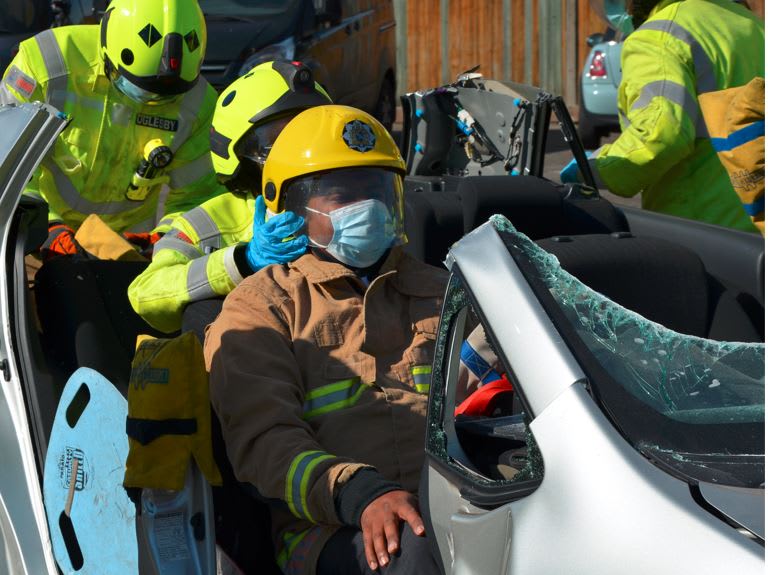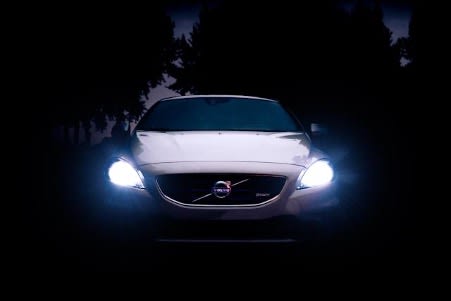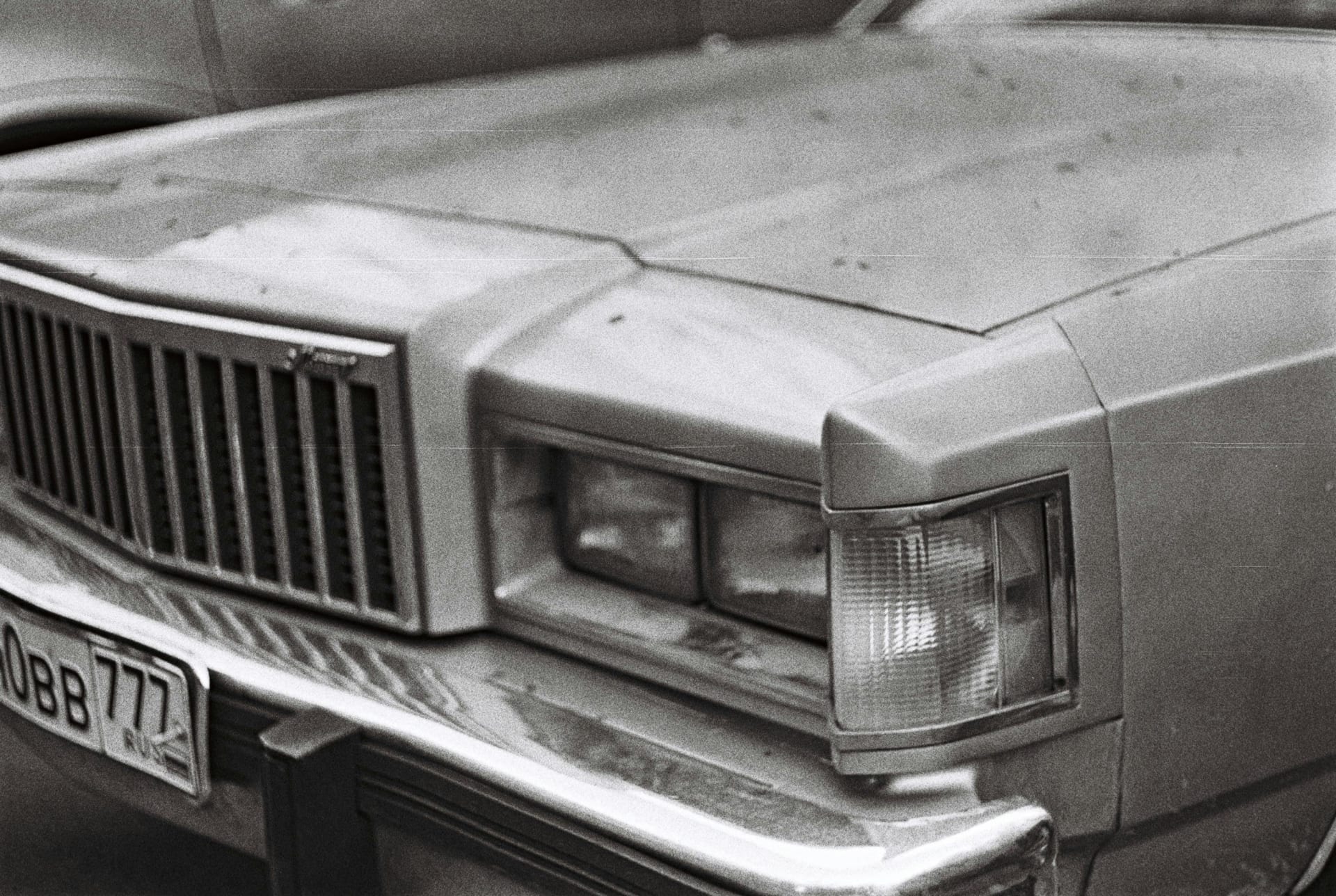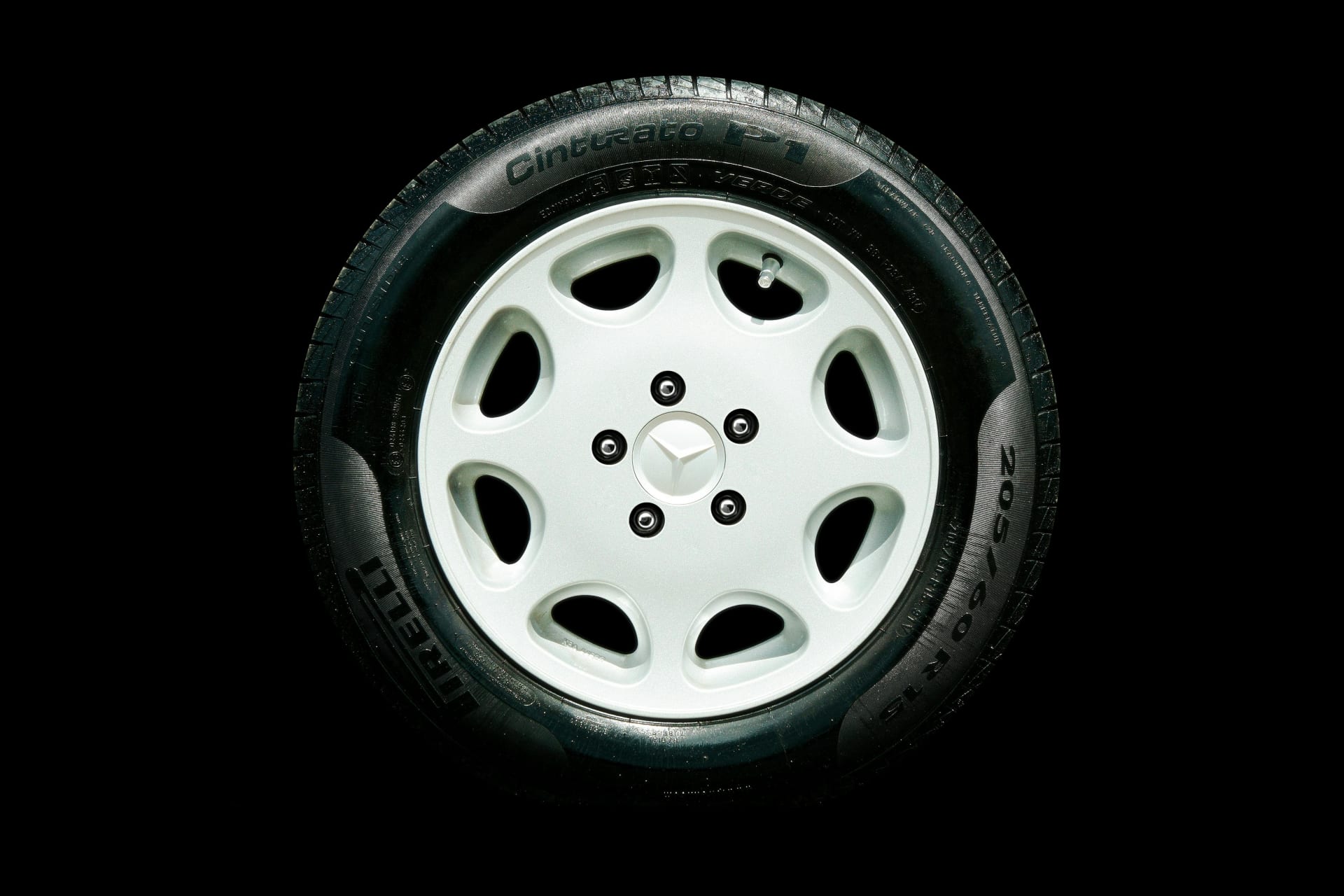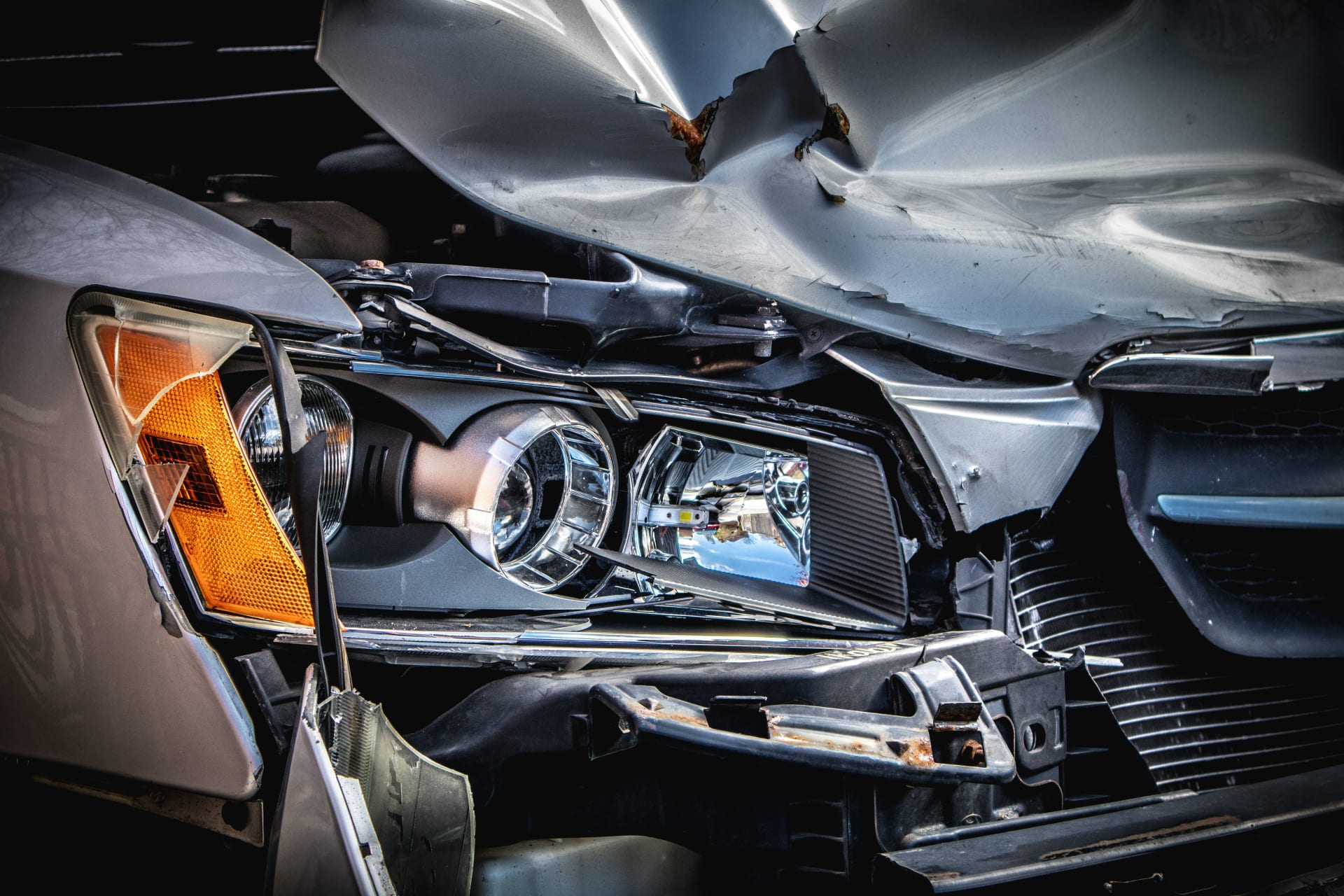Didcot’s Mayor has been dramatically rescued from a crashed car by trainee firefighters today, highlighting the dangers of not wearing a seatbelt, speeding, taking drink or drugs, and distraction.
The Mayor, Councillor Mocky Khan, volunteered to role-play a driver trapped inside a crumpled vehicle, at the town’s fire station. He experienced the claustrophobia of being trapped inside, relying on the expertise of Oxfordshire County Council’s Fire and Rescue Service to cut him free.
Andy Ford, Oxfordshire Fire and Rescue Service’s road safety manager, said: “As the Mayor of Didcot discovered, it is terrifying being trapped. But imagine if you’ve suffered major injury, or if the vehicle is ablaze, or slowly submerging in water following a crash into a river or lake.”
Once ‘rescued’, the Mayor was given a guided tour of the new training centre at Didcot Fire Station. It is now Oxfordshire’s central hub for road traffic collision training. The venue gives crews an all-weather facility to practice rescue techniques for a range of traffic incidents, from motorcyclists to crashes involving buses and large goods vehicles.
The car cut exercise also helps trainees gain valuable experience using rescue equipment and real people, in a safe and controlled environment. It prepares them to play an active part in the ongoing road safety campaign – ‘It’s not worth the risk’ – highlighting the contributory factors in road traffic collisions across the county:
Drivers and passengers are twice as likely to die in a crash if they are not wearing a seatbelt. Even careful drivers can be distracted, by a phone call, text message, in-car technology, or a Satnav. A split-second lapse of concentration could result in a crash. Using a mobile phone when driving increases the chances of a crash by four times.
The campaign promotes safe alternatives for drivers who rely on their phones. This includes, diverting calls to the messenger service or having a no calls rule when driving. Passengers could also be asked to make or take calls instead of the driver.
The faster someone drives, the less time they have to stop when the unexpected happens. Research shows that for every mile-per-hour increase in speed, there is a three per cent increase in the risk of a road traffic collision.
Many crashes happen because the driver loses control, particularly on bends or in wet or icy conditions. The message is: drive for the road conditions and give time to react by reducing speed. The difference of a few miles per hour could mean the difference between life and death.
Drinking alcohol and driving puts all road users in danger. The only safe option is not to drink alcohol. It’s not worth the risk, and there are always safe alternatives such as taking a taxi, bus, or train; designating a ‘dry’ driver, walking home, or deciding to stay overnight.
Andy Ford continued: “Oxfordshire has more rural roads than most counties. This means drivers must be alert, drive sensibly, safely and share the risk, from the moment they turn the ignition key.
“The fatal four are contributory factors in the deaths of drivers, their passengers, other road users and pedestrians. But, in most cases, these deadly collisions are avoidable.
“If you cause a collision, it can result in life-changing injuries to you, and to anyone else involved. You will also carry the terrible guilt, and for what? For the sake of a lunchtime drink, a phone-call, or saving a bit of time? It really isn’t worth the risk.”
For further information about the Fatal Four and how to drive safely, visit the website: www.365alive.co.uk/fatalfour
